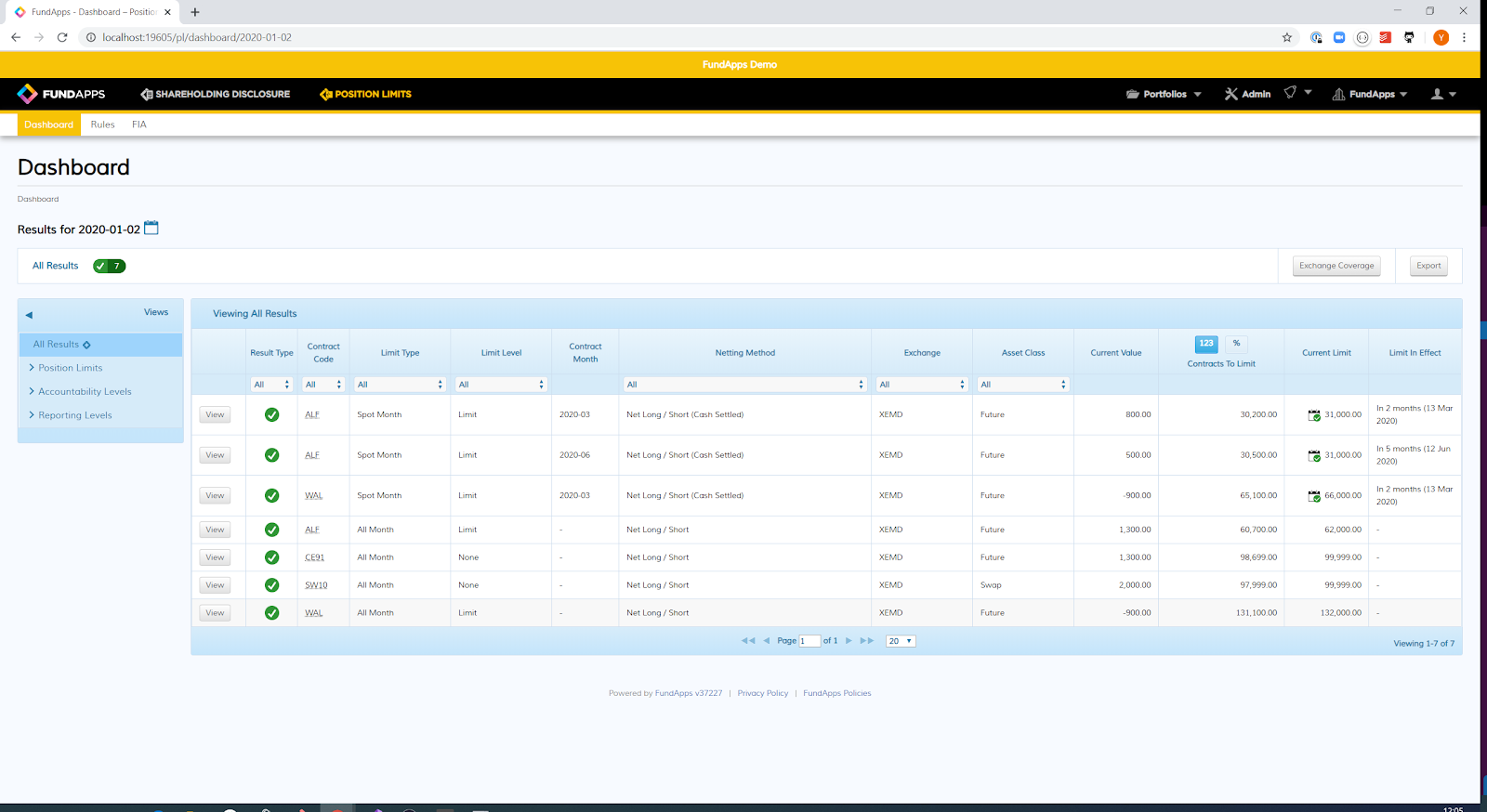*This blog was updated in July 2020.

What are Position Limits?
Position limits represent the highest number of futures or options contracts an investor is allowed to hold on a given underlying security. Regulatory bodies and exchanges establish different limits for each contract based on the underlying share quantity and the trading volume. Monitoring position limits presents challenges for even the most well-resourced firms. These challenges stem from both exchange-imposed limits and limits tracked across exchanges under the CFTC and ESMA. With MiFID II having come into force in January 2018 and the CFTC finalising an expanded position limits regime for commodity derivatives, commodities trading and position limit monitoring are at the forefront of regulatory compliance.
Cumbersome, hard-to-access data and complex exchange-imposed limits make accurate and timely monitoring an ongoing challenge.
Sourcing Exchange Limit Data
The most significant barrier to effective position limit monitoring is access to data -both in terms of capturing the data and consolidating it. The frequency of updates to limits has made it challenging for institutions to keep current and stay compliant, and the complexity of the limit calculations presents a heavy burden on compliance professionals.
Exchange limits are monitored within an “All Month”, “Single Month” and “Spot Month” time frame, with a given exchange publishing trading limits based on the number of contracts (or lots). Breaching any one of these limits could result in penalties or sanctions. A significant challenge faced by firms is the inability to connect directly to the exchange to source limit and spot calendar information as well as keep this information updated on a daily basis.
Sourcing and calculating spot calendar dates is non-trivial, as exchanges don’t readily publish this information. Exchanges release rules which explain when a contract enters its spot period, as opposed to publishing the actual date. This means compliance officers are forced to calculate the spot date manually in order to accurately monitor Spot Month limits. We’ve automated this for you, eliminating the need for your compliance team to gather this information directly from the exchange and calculate the dates manually.
FundApps’ Position Limit service combines exchange data obtained from a central data source with automatically sourced spot month calendars, obviating the need for compliance officers to routinely wrestle with a multitude of data formats from across the web. We run checks for regulatory changes every day and notify our users of any change. Where data is unavailable, we simply use the most recent version of the regulation that was available.
Netting and Aggregation
Accurately determining not only one’s positions, but also one’s proximity to limits, requires a daunting level of calculation. Aggregation and netting procedures are often opaque and extremely complex, typically requiring compliance staff or consultants to process properly.
While position limits might not vary broadly between exchanges, the combination of specifics per contract can result in hundreds of thousands of combinations that could lead to a breach. This requires extensive research and analysis from teams to ensure compliance with rules that can (and do) result in significant fines if broken. It is not unheard of for firms to be in breach of limits they didn’t know were even possible, let alone applicable.
What remains is a heavy burden of intricate calculation that rests on the shoulders of compliance officers to net and aggregate all the positions held by a client each day.
Reducing Communication Lag
The turbulent nature of commodity trading requires compliance teams to have information available at their fingertips. Monitoring position limits is a time-intensive and arduous process where timely, accurate information is essential. Penalties and sanctions against non-compliant firms can include drastic fines, but could also include trading bans for extended periods of time. With this in mind, traders can operate with greater certainty and reduced risk when compliance teams are operating as efficiently as possible.

The results dashboard in FundApps’ Position Limits service notifies users of approaching limits and makes it quick and straightforward to share relevant information with traders or other compliance teams, transforming a process which usually takes hours to one that takes minutes.
